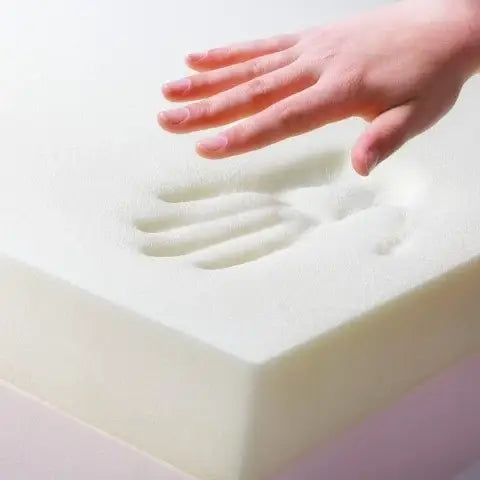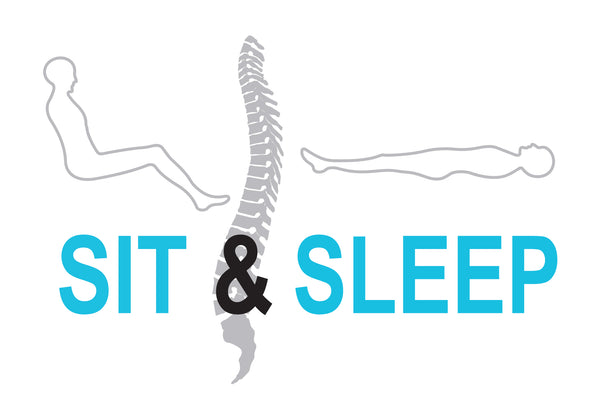
What is a memory foam mattress?
What is a memory foam mattress?
A memory foam mattress (also called a memory foam mattress or Tempur mattress) is a mattress made of viscoelastic synthetic foam that conforms to your body's shape through heat and pressure. This type of mattress offers excellent pressure relief and support, making it popular with people with joint or back pain.
A memory foam mattress is made of viscoelastic polyurethane – a type of plastic. What's unique about memory foam (like Tempur mattresses) is that the material is relatively firm in itself, but softens with body heat. In practice, this means the mattress gradually conforms to your body, literally "embracing" you.
Memory foam and back pain
Who is a memory foam or Tempur mattress suitable for?
People with back and joint pain. People who enjoy a cozy, enveloping feeling. Back sleepers.
Properties of a memory foam mattress
- Pressure relieving – Distributes weight evenly and reduces pressure points
Body shaping – Conforms to your body and slowly returns to its original shape - Motion absorbing – Does not move when your partner turns, ideal for couples who sleep lightly and wake up from movement.
Heat sensitive – Softens with body heat and conforms to the body
How much weight a memory foam mattress can support depends on
- The core of the mattress
A memory foam mattress usually consists of a supportive foam core (e.g., cold foam or polyether) with a layer of memory foam on top. The support comes largely from this core. The firmer the core, the more weight the mattress can handle. - Density of the memory foam
The density of the memory foam itself (expressed in kg/m³) determines the mattress's durability and resilience. Low density (<40 kg/m³): less suitable for heavier people. High density (50–85 kg/m³): better support, more durable, and more suitable for heavier weights.
Guidelines for carrying capacity per person
Standard memory foam mattress: approx. 90 – 100 kg
High-quality (such as Tempur): 120 – 150 kg (depending on type)
Specially reinforced mattress: Up to 180 kg or more
Tip:
If you (or your partner) weigh over 100–120 kg, choose a memory foam mattress with:
• reinforced HR core
• at least 20 cm thick
• high foam density (≥50 kg/m³)
Ventilation and temperature
Although memory foam mattresses are of very high quality, they also don't ventilate as well as latex, for example. Due to its dense cell structure, the material retains heat, which is a disadvantage for people who get hot easily. As a result, the material sometimes feels stuffy and can be a breeding ground for bacteria if hygiene isn't maintained properly.
Difference between cold foam and memory foam (such as Tempur)
Cold foam takes its name from its production method: the foam is poured into cold molds. This is called "Cold Cure Molding." Cold foam is made of polyurethane. It's a sturdy material that won't sink into.
Memory foam: unlike cold foam, it's made of viscoelastic polyurethane. It reacts to body heat, softening the pressure points. This ensures even distribution of body weight, relieving pressure and relieving joint strain. It's therefore often recommended for people with muscle and joint pain. The downside is that it's less ventilated and can sometimes feel a bit "sunken."
Advantages and disadvantages of memory foam
- Advantages:
Pressure reducing and pain relieving
Adapts to the body
Silent and shock absorbing - Disadvantages:
Heat retention – may be too warm
More difficult to turn – you sink deeper into the mattress
Less ventilation – especially with older or dense foam types
Poor support for stomach and side sleepers
Our view on a memory foam or Tempur mattress
Mattresses with Tempur material react strongly to body heat, causing you to lie in a hollow. This makes turning difficult and can be detrimental for back problems. This mattress may be suitable for back sleepers because the pelvis tilts slightly backward, providing gentle traction on the intervertebral discs. However, we find that some people with back problems benefit from firmer support than a memory foam mattress offers. A memory foam mattress is less suitable for side sleepers because the material primarily conforms to heavier areas such as the pelvis and lower back, where a lot of heat is generated. These lighter parts of the body remain elevated because the mattress receives less heat and pressure there, resulting in inadequate spinal support and a curved shape.


